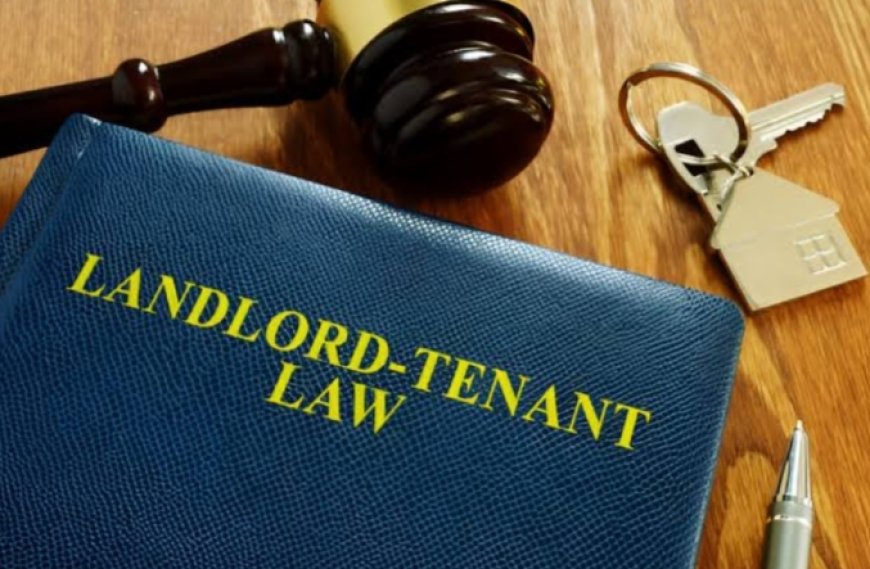How Does a Section 21 Notice Work?
When it comes to regaining possession of a rental property in England and Wales, landlords often rely on a Section 21 notice or a Section 8 notice.

When it comes to regaining possession of a rental property in England and Wales, landlords often rely on a Section 21 notice or a Section 8 notice. Understanding how these legal processes work is crucial to avoid mistakes that could delay eviction. This guide explains how a Section 21 notice operates, compares it with a Section 8 notice grounds, discusses rent increases under a Section 13 rent increase, and provides essential landlord advice on evicting a tenant legally.
What Is a Section 21 Notice?
A Section 21 notice (also called a "no-fault eviction") allows landlords to evict tenants without providing a reason, as long as the fixed-term tenancy has ended or there is a break clause in the contract. It is commonly used when landlords want to sell the property, move back in, or end the tenancy for other personal reasons.
Key Requirements for a Valid Section 21 Notice
-
The Tenancy Must Be an Assured Shorthold Tenancy (AST) – Most private rentals in England and Wales fall under this category.
-
The Deposit Must Be Protected – Landlords must place the tenant’s deposit in a government-approved scheme and provide prescribed information within 30 days.
-
The Tenant Must Receive Required Documents – This includes:
-
A valid Energy Performance Certificate (EPC)
-
A Gas Safety Certificate (if applicable)
-
The government’s "How to Rent" guide
-
-
The Notice Period Must Be Correct – Typically, landlords must give at least two months’ notice.
-
The Notice Cannot Be Served During the Fixed Term (Unless There’s a Break Clause) – If the tenancy is still within the fixed term, landlords must wait until it ends unless the contract allows early termination.
If any of these conditions are not met, the Section 21 notice may be invalid, delaying the eviction process.
Section 21 vs. Section 8 Notice Grounds
While a Section 21 notice is a no-fault eviction, a section 8 notice grounds is used when a tenant has breached the tenancy agreement (e.g., rent arrears, property damage, or antisocial behaviour).
Common Section 8 Notice Grounds
-
Ground 8 (Rent Arrears) – If the tenant owes at least two months’ rent (for monthly tenancies) or eight weeks’ rent (for weekly tenancies).
-
Ground 10 (Persistent Late Rent Payments) – Even if the arrears are less than two months, landlords can still seek possession.
-
Ground 11 (Repeated Breach of Tenancy) – For tenants who frequently violate terms (e.g., subletting without permission).
-
Ground 12 (Property Damage) – If the tenant has caused significant damage to the property.
Unlike a Section 21 notice, a Section 8 notice requires court proceedings, evicted, and the judge will decide whether eviction is justified based on the evidence.
Can a Landlord Increase Rent Before Serving a Section 21 Notice?
landlord advice sometimes need to adjust rent prices, which can be done via a Section 13 rent increase.
How a Section 13 Rent Increase Works
-
Landlords must give at least one month’s notice (for weekly/monthly tenancies) or six months’ notice (for yearly tenancies).
-
The increase must be fair and in line with local market rates.
-
Tenants can challenge the increase via a tribunal if they believe it’s unreasonable.
If a tenant refuses to pay the increased rent, landlords may then proceed with a Section 8 notice (Ground 8) for rent arrears or a Section 21 notice to end the tenancy.
The Eviction Process: What Happens After Serving a Section 21 Notice?
-
Serve the Notice Correctly – Ensure the tenant receives the Section 21 notice in writing (either by hand, email, or post).
-
Wait for the Notice Period to Expire – The tenant has at least two months to vacate.
-
Apply for a Possession Order (If Tenant Refuses to Leave) – If the tenant stays beyond the notice period, landlords must apply to court for a standard possession order.
-
Obtain a Warrant for Eviction (If Necessary) – If the evicting a tenant still refuses to leave, bailiffs can be instructed to remove them.
How Long Does the Entire Process Take?
-
If the tenant leaves voluntarily: The process ends after the notice period.
-
If court action is needed: It can take 3–6 months (or longer if the tenant disputes the eviction).
Landlord Advice: Avoiding Common Mistakes When Evicting a Tenant
-
Always Follow the Legal Process – Skipping steps (e.g., failing to protect the deposit) can invalidate the eviction.
-
Keep Detailed Records – Document all communications, rent payments, and property inspections.
-
Consider Mediation Before Eviction – If the issue is rent arrears, negotiating a payment plan may avoid court.
-
Be Aware of Tenant Rights – Retaliatory evictions (serving a Section 21 notice after a tenant complains about repairs) can be challenged in court.
-
Seek Legal Advice if Unsure – Eviction laws are complex, and mistakes can be costly.
Conclusion
A Section 21 notice is a powerful tool for landlords who need to regain possession of their property without proving fault. However, strict legal requirements must be followed to ensure the notice is valid. For tenants who breach the agreement, a Section 8 notice grounds may be more appropriate.
Landlords should also be mindful of rent increases under a Section 13 rent increase and ensure all paperwork is correctly handled before evicting a tenant. By following proper procedures and seeking landlord advice when needed, property owners can minimise delays and legal complications in the eviction process.







































































![https //g.co/recover for help [1-866-719-1006]](https://newsquo.com/uploads/images/202506/image_430x256_684949454da3e.jpg)


























![[PATREON EXCLUSIVE] The Power of No: How to Say It, Mean It, and Lead with It](https://tpgblog.com/wp-content/uploads/2025/06/just-say-no.jpg?#)



















































